Since getting our hands on the Magic Leap One last week, we've been methodically delving into each feature and reporting our findings step-by-step. Earlier this week, we took a look at the Screens app (a video viewer) and the Helio app (an AR web browser). This time around, we'll be digging into the Create app, the experience that allows you to fill the real world with objects that transform the nature of your local reality.
Part of the reason we started with the Screens and Helio app is because those are easily the most accessible apps offered on this device in terms of tools the average user might immediately find useful. Watching videos and browsing the web dominates a huge portion of our time, so it's important to get those basics right, and Magic Leap did.
But now things get a bit trickier, as the idea of spending extended time in virtual worlds, whether they're in VR or AR, is still a concept foreign to most consumers.
- Don't Miss: Magic Leap's Screens App Is the Closest Thing to a Killer App for the Magic Leap One, For Now
Although most are now familiar with small portholes into AR immersion afforded by Snapchat and mobile apps via ARKit and ARCore, the Magic Leap One's Create app hopes to act as the next step up, allowing users to spend time in AR interacting with persistent virtual objects that respond to your real world environment. For most, that behavioral change would indeed be a major "leap" regarding digital content interactions, so Magic Leap has a major challenge ahead of it. Is the Create app capable of meeting that challenge? Let's find out.
Before you can begin, you'll be required to scan your real world environment to establish the WorldMesh upon which the Create app's virtual elements will function. Depending on the environment, this can either be a quick and somewhat fun process, or a relatively tricky and slightly lengthy endeavor. In this case, I decided that I wanted to move from the perfect conditions of a well-lit, controlled space, and try the Magic Leap One in the wild: a New York City cafe.
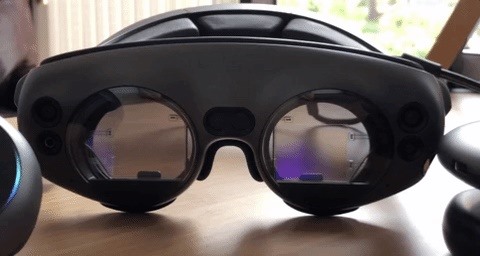
The lenses housing the waveguides on the Magic Leap One are slightly shaded (much like movie theater 3D glasses), so my decision to try this at night, in a dimly lit cafe wasn't optimal. Additionally, half of the cafe was filled with windows, another no-no when it comes to creating the WorldMesh map. But that's exactly what I wanted — less than optimal conditions. Nevertheless, I'm happy to report that, despite some areas that simply couldn't be mapped because of darkness, windows, etc., the mapping process was mostly a success.

Part of the mapping process includes establishing points all around you that are confirmed when you successfully look at and maintain a gaze toward a particular target. This aspect of the mapping process kind of turns it into a game, which makes the process feel far less tedious than it might without that game-like aspect. But even in a well-lit room, I have yet to experience a mapping session that doesn't return several areas that haven't been successfully mapped and require additional mapping attempts.

Once your WorldMesh is established, you can begin the process of creating your AR world. Like most of the apps on the Magic Leap One, you start the Create app by selecting it from the main, circular menu area, after which you're presented with a slightly less modern, rectangular menu full of the options that allow you begin populating your world with virtual objects.
The left side of the menu is where the content options are presented, giving you a choice between brushes (a painting tool in the tradition of Tilt Brush, but far less powerful), stickers (place persistent virtual stickers anyone in your mapped environment), blocks (think Lego in AR), gadgets (an array of surprisingly interactive devices, including flashlights), characters (easily the best part of Create, offering living dinosaurs, turtles, and knights), and worlds (tiny trees, foliage, and nature nooks you can place anywhere).
In the case of blocks, some can be fitted together and attached to gadgets to create brand new contraptions, as Magic Leap creative director Jeremy Vanhoozer recently showed off on Twitter.

On the right side we have our controls, which gives us the option to grab objects, freeze animated elements, clone (copy) elements, erase a particular element (which disappear with a satisfying "poof" of magic dust), or clear all elements from the space.
In deeper level of the menu, there's also the option to turn WorldMesh visibility on or off (which can be helpful when you're trying to determine why certain elements are behaving in certain ways), scan a new WorldMesh, turn music and overall sounds on or off, and save or load previous environments.
The style of the virtual objects are pretty uniformly simple and whimsical. Clearly, the goal here was to help end users and developers understand how fun creating AR environments can be rather than to present anything too profound or serious. Although the Magic Leap One isn't recommended for children, I think most children would really enjoy experiencing the Create environment.
That said, I think in the near future we'll likely see other Create environments that are more intense as the ecosystem matures. Imagine an Alien: Covenant set of options that allow you to place fallen alien ships, otherworldly plant life, facehuggers and, of course, a few xenomorphs running around, all while the sinister music from the Alien franchise is pumped all around you via spatial audio. I can't wait!
At present, the Create experience is a lot more tame, allowing you to do things like place two knights on a table, who immediately recognize each other and begin fighting. My favorite part of the Create experience is watching the characters — from a flying turtle, to a dinosaur, to a flying saucer — recognize and account for both virtual objects and real world structures that you've mapped.
However, I did find a few shortcomings. Unlike in VR, where you can walk right up to a virtual character and examine its skin in great detail as you walk around it, in Create, you're kept at about a one foot distance. So if you move closer to try to look at something in greater detail, the virtual object gets clipped off or your face simply moves through the character or object.
This reminds me to mention, as others have, the field of view (FoV) limitations (40 degrees horizontal, 30 degrees vertical, and 50 degrees diagonal). It's a hinderance that can only be ignored with practice.
For example, the spatial audio in some VR experiences will sometimes lead you to snap your head around to look at something happening behind you. As you snap your head around, the virtual environment experience is unbroken and consistent. Because of this visual consistency, your physical reactions to immersive content become a natural habit, and you really begin to lose yourself in VR.
But with the Magic Leap One, the FoV limitations keep you in a visual box of sorts, reducing the sense of immersion that you'd experience in VR. Similarly, the impact of the impressive occlusion on the Magic Leap One is hobbled by the limited FoV. Despite those shortcomings, the Magic Leap One's spatial audio is still a helpful element in making the limited FoV AR experience "seem" more immersive.
- Don't Miss: Magic Leap's Good News — the Haters Are Wrong, Bad News — Now Everyone Will Focus on Apple Glasses
The haptic feedback-enabled controller is also a powerful tool, but its tracking was sometimes a bit unwieldy, at times requiring several attempts to establish a proper grip on a virtual object or accurately direct the controller's pointer at a menu item. Not perfect, but still pretty solid most of the time.
There's another question this session helped me to answer: Does the Magic Leap One have a creepy factor for the mainstream public (like Google Glass)? While using the Magic Leap One in a cafe setting, dodging flying turtles, crouching to look at tiny trees, and turning to follow the path of flying saucers, I was struck by the fact that customers didn't seem bothered or overly curious about this person interacting with a virtual world they couldn't see.
To be fair, New Yorkers are notoriously nonplussed by strange events. And the fact that many mainstream consumers don't even know what the Magic Leap One is yet could mean that some thought I was simply engaging in performance art while wearing ski goggles. (Yes, that kind of stuff happens in New York City.)
But once the public is more familiar with the Magic Leap One, and more users and developers start wearing it to events and parties, some privacy concerns may begin to arise (you can record anything you're seeing while using the device). But Google Glass "looked" like a device primarily meant to snap photos of people in public, while, to the untrained eye, I think the Magic Leap One looks more like an overall assistive device rather than a piece of surveillance tech.
In that respect, the Magic Leap One may very well have an easier time being accepted by the public than Star Trek Borg-like Google Glass look.
Aside from entertainment experiences (gaming, movie promotions, etc.), I'm not sure what other utilities the Create app will provide. But for now, if we're just talking about entertainment, this app comes close (with some important limitations) to achieving the goal many have discussed of moving the immersive experiences available in VR to a functional AR version that lives in tandem with the real world.
Just updated your iPhone? You'll find new emoji, enhanced security, podcast transcripts, Apple Cash virtual numbers, and other useful features. There are even new additions hidden within Safari. Find out what's new and changed on your iPhone with the iOS 17.4 update.
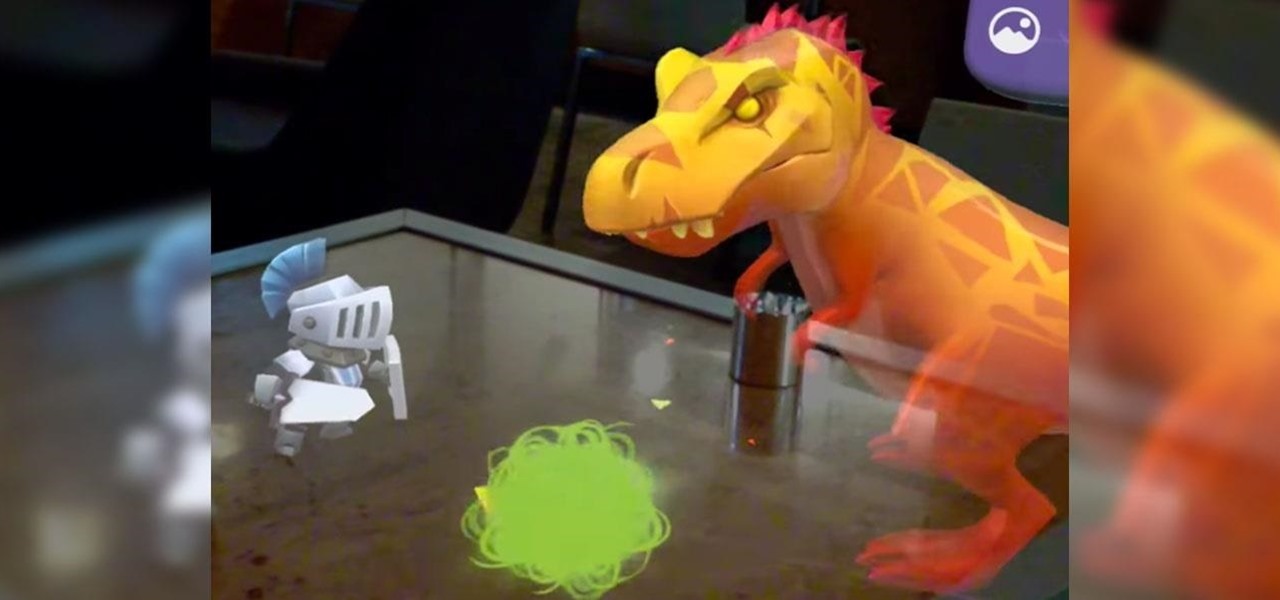





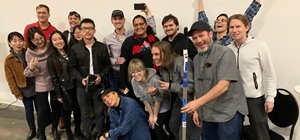
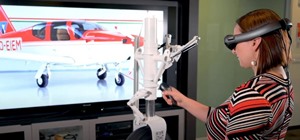
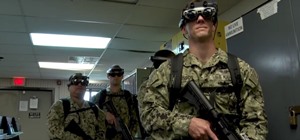
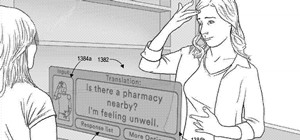
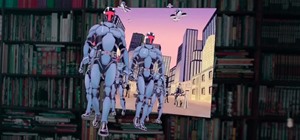


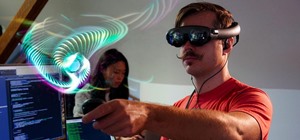

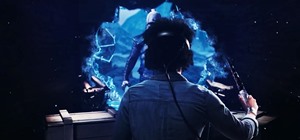
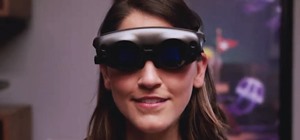
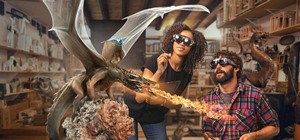
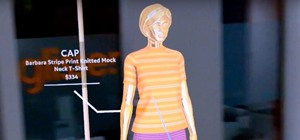
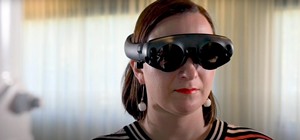
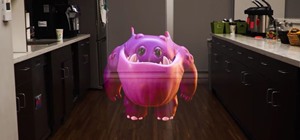
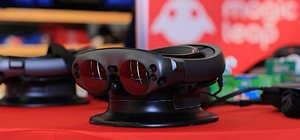
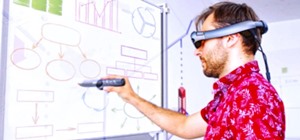


Be the First to Comment
Share Your Thoughts